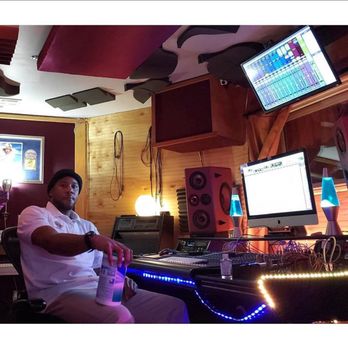Dolby Atmos 3D mixing is nothing but a process that takes audio tracks from your song and places them in a 3D sound environment. It is not compulsory to produce your song in atmos, you can always create it in stereo. The Dolby Atmos mixing has the ability to magically transform any stereo mix into a masterpiece.
Dolby Atmos Studio Georgia, adds dimensions to the traditional surround sound setup. In short, Dolby Atmos is a new generation technology that refines and redefines your sound experiences. It moves your stereo sound in a 3D environment so that you get the most immersive and realistic sound experience.
What does Dolby Atmos Do?
The launch of Dolby Atmos in late 2019, marked its notable entry into the world of music streaming. Music streaming services like Spotify and Amazon Music have made access to music quite easy. However, they still produced the old channel-based music.
On the other hand, Dolby Atmos uses object-based technology for music production and playback. It can adjust to various speaker configurations, which makes it a preferable option to be chosen.
What is 3D Mixing?
3D mixing is a process of creating or manipulating music in a spatial (three-dimensional) space. A space where sound can be placed and moved in every possible direction. A 3D mixing of audio will enhance your listening experience by providing an immersive and realistic sound space.
The objective of 3D mixing is to have each element exist in its own space. While also maintaining the clarity, warmth, and vibrant quality of the audio.
How Does Mixing Work For Dolby Atmos?

For object-based mixing or 3D mixing, sound engineers have to handle significantly more audio channels in their workflow. However, there is absolutely nothing to worry about. As these channels need not have to be routed every single time. You can set them up once, and save them for future use.
There are two different types of signals that Dolby Atmos consists of:
- Beds.
- Objects.
Beds:
The beds are classic and traditional. They are channel-based surround sounds that lack metadata. Beds are fixed on 7.1.2. Surround audio bus, and does not move even slightly in space. You can simply use the audio bus if you ever want to present sounds in a classic monophonic, stereo, or channel-based surround.
Objects:
In today’s world, object-based audio has been given deep importance and is now entering the entertainment market. In comparison to channel-based audio which lacked metadata, object-based audio offered positional metadata.
Objects are mono signals that can have assigned coordinates using a 3D panning tool. This can be placed anywhere in a three-dimensional sound field. The number of speakers used for playback can vary depending on the position and size of metadata.
In short, objects can be either static or moving.
If you are looking for 3D mixing in Dolby Atmos. There are two software components that are highly necessary and cannot be missed.
( Also Read More – Dolby Atmos Music Mastering )
1. Dolby Atmos Renderer:
A Dolby Atmos renderer is quite necessary for creating a Dolby Atmos 3D mix. This includes Dolby Atmos Production Suite and Dolby Atmos Mastering Suite.
The Dolby Atmos renderer turns the delivered individual signals into an audible sound by using metadata. You can listen to your Atmos mixes only because of the Dolby Atmos renderer.
You can either make the renderer run on the same or on a separate rendering computer. It totally depends on you.
You can further use a hardware device like Dolby RMU, for Atmos mixing stages.
2. Digital Audio Workstation with Object Support:
A Digital audio workstation can be suitable for Dolby Atmos music, only if it is integrated to or be able to connect to, Dolby AtmosRenderer. Today, Dolby audio workstations have immersive panners feature which can be used for 3d mixing music.
Dolby Atmos music panners are widely used because they support additional DAWs and include music-focused features. We can expect that more DAWs will integrate support for 3D mixing in the future.
In addition to all the above-mentioned things, a suitable monitoring setup is essential. A professional 3d mixing environment starts with a 7.1.4 setup. If you are someone who works from their home studio and wants to create a rough mix. You can always do so, as an Atmos render allows rendering for small monitoring systems too, and even for headphones.
You will have to deal with multiple channels for a 3D audio mix than you used to do in classic stereo. With a well-structured workflow, you will need a powerful studio computer for smooth rendering.
( Read More – Understanding Dolby Atmos and its QC Challenges- Best Practices on Dolby Vision Quality Control )
Conclusion:
Unlike classic channel-based formats, Dolby Atmos is an object-based audio format. Which can produce a spatial (3-dimensional) audio independent of speaker setup. The new generational 3D mix technology refines the audio and adds more clarity, and warmth to it.
Dolby Atmos Studio Georgia moves your stereo sound in a 3D environment so that you get the most immersive and realistic sound experience.

